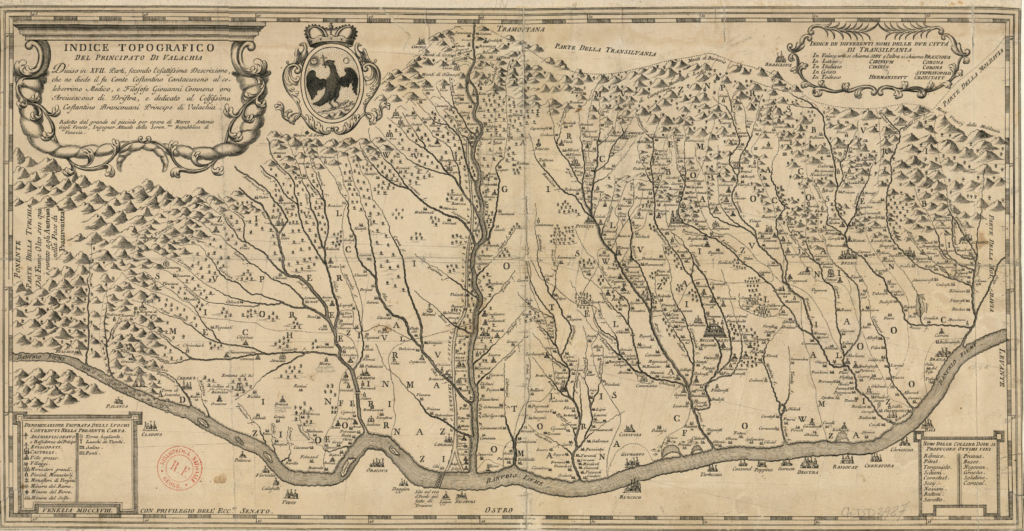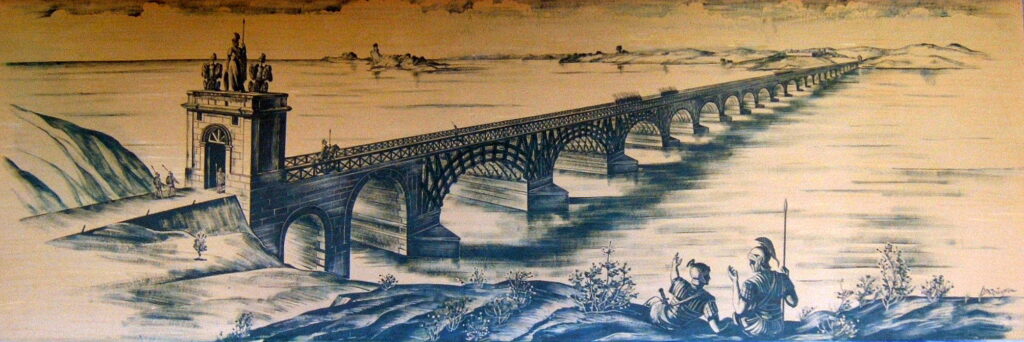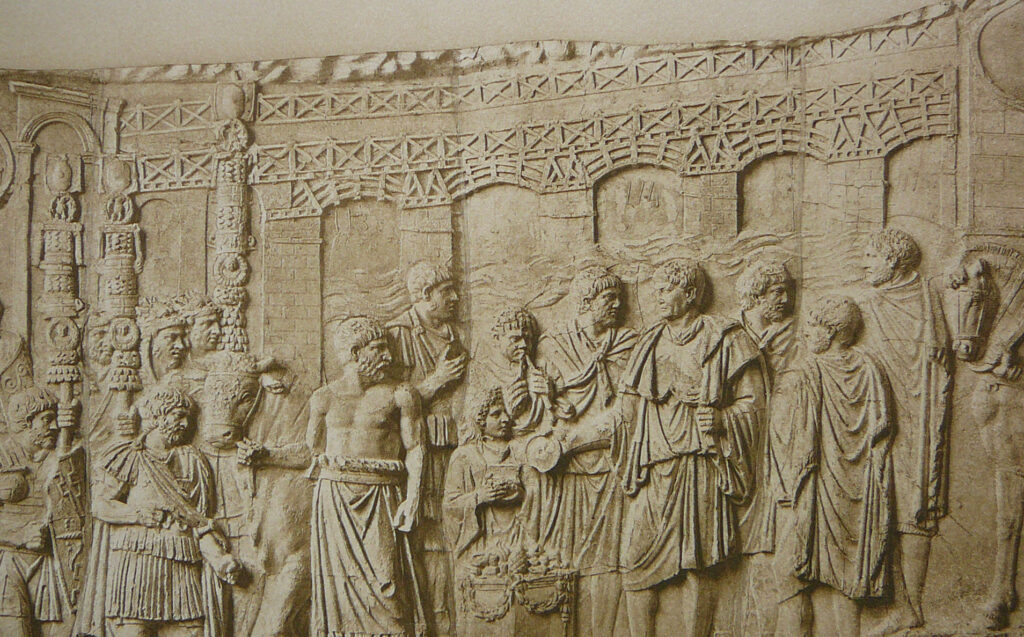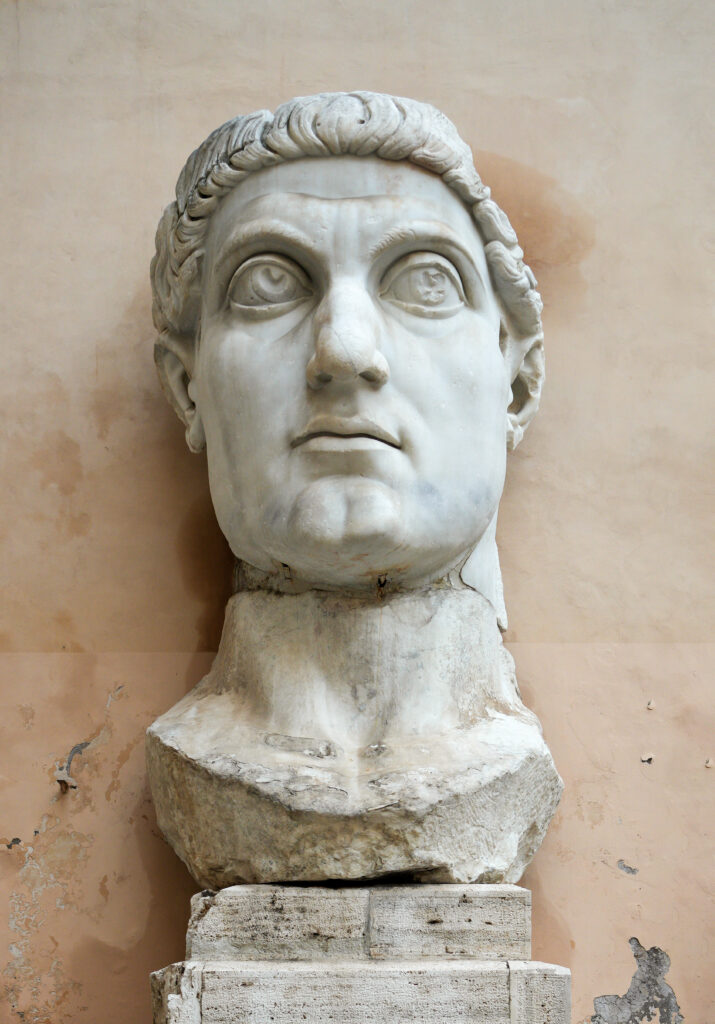This Week in History recalls memorable and decisive events and personalities of the past.
5th July 328 – The official opening of Constantine’s Bridge, built over the Danube between Sucidava (Corabia, Romania) and Oescus (Gigen, Bulgaria)

17th century map of Wallachia (modern-day southern Romania) by Stolnic Constantin Cantacuzino
One of the last regions to be brought under Roman control was that of the province of Dacia, which today is western Romania and Hungary.
Ironically the modern Romanian language is the only Romance language (Romance as in descendent of the Romans) in the region, though how exactly this came to be is controversial among linguists and historians. Romania itself also means land of the Romans.
For decades, the mighty Danube River marked the northern border of the Roman Empire’s holdings in the Balkans. However, despite being a wide, imposing river, and an impressive line on a map, the river was less of a barrier than the Romans might have hoped.
While moving large armies across the river was difficult, trade, raiding and low-level migration could all take place across the it without much scope for policing it. There were also riches to be found across the Danube, in the form of silver mines in Dacia itself, which since 86 BC had been a unified kingdom on Rome’s border.
Between 101 AD and 102 AD, the famous Roman emperor, Trajan, fought a war with the Dacian kingdom. The Romans were victorious, but the Dacians still held on. Both sides knew the matter was not settled, and in preparation for another campaign into Dacia, Trajan commissioned the construction of an architectural masterpiece.

A 1907 conception of Trajan’s Bridge by engineer E. Duperrex [Rapsak – originally posted to Flickr as Drobeta-Turnu Severin, https://commons.wikimedia.org/w/index.php?curid=9653053]
Trajan’s Bridge was one of the most impressive constructions of the ancient world. The first bridge in world history to cross the lower Danube River, it spanned 1,135 m and was one of the longest arch bridges in the world for 1,000 years. It was constructed between 103 and 105 AD under the direction of Apollodorus of Damascus.
Approaching the bridge, one would encounter a stone slab declaring:
“Emperor Caesar, son of the divine Nerva, Nerva Trajan, the Augustus, Germanicus, Pontifex Maximus, invested for the fourth time as Tribune, Father of the Fatherland, Consul for the third time, excavating mountain rocks and using wood beams has made this road.”
With this new bridge allowing his armies to rapidly cross the Danube, Trajan would in 106 AD conquer Dacia and establish a Roman province in the region.
The new province was greatly troubled, however. A few decades after the conquest, the empire fell into an enormous crisis known as the Crisis of the Third Century. As civil war and invasion distracted the Roman armies, the province of Dacia was constantly raided by neighbouring tribes, and fell into chaos.
In 270 AD, in an effort to consolidate imperial resources, Emperor Aurelian withdrew from Dacia, and to prevent it being used against the Romans, he had Trajan’s bridge destroyed.

Relief of the bridge on Trajan’s Column showing the unusually flat segmental arches on high-rising concrete piers. Emperor Trajan is depicted in the foreground presiding over a sacrifice by the Danube
Partly due to the effort of Aurelian and partly due to the reforms of his successor, Diocletian, the Roman Empire mostly recovered from the great crisis of the 3rd century.
A Roman born in the southern reaches of Dacia, named Constantine, would go on to become emperor, and was the first Christian emperor in Roman history. After unifying the empire through a number of civil wars, Constantine looked to reconquer Dacia and return it to the status of a Roman province. For easy control of the territory, however, Constantine would need a bridge.

Statue of Constantine on the Capitoline Hill in Rome [Merulana, https://commons.wikimedia.org/w/index.php?curid=126701466]
Seeking to surpass Trajan, Constantine ordered the construction of his own bridge over the Danube at a wider point in the river. This new bridge, between what are modern-day Romania and Bulgaria, was 2,437 metres long and 10 metres high.
Opened on 5 July 328, this new bridge helped the Romans to reestablish some territory on the other side of the Danube. It remains one of the longest bridges ever built and the longest bridge of the ancient world.
The structure’s ultimate fate is not well known, but it is known that it had probably been destroyed, or had collapsed, within 50 years of its opening.
The ruins of the structure can still be seen on the banks of the Danube to this day.

Remnants of Constantine’s Bridge [Rjdeadly, https://commons.wikimedia.org/w/index.php?curid=147360048]
If you like what you have just read, support the Daily Friend

